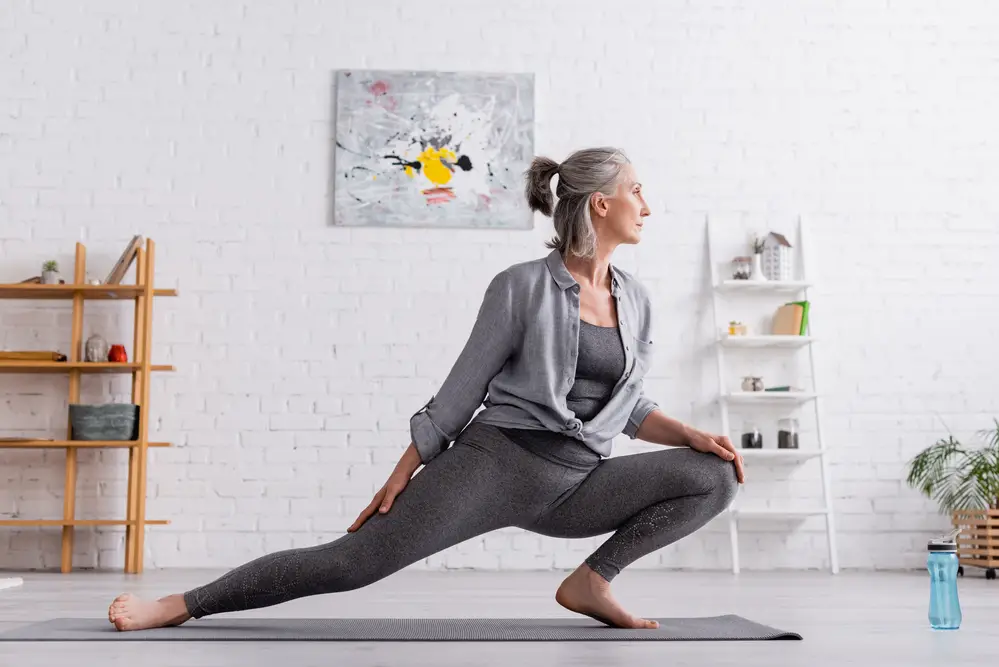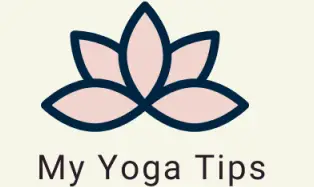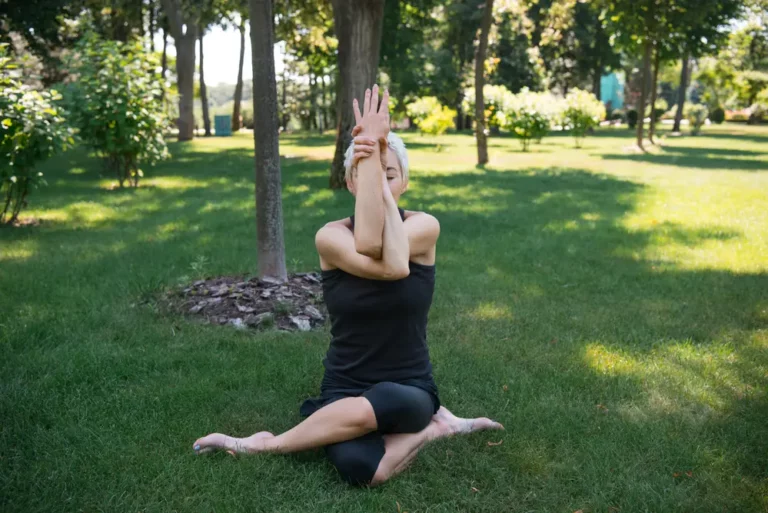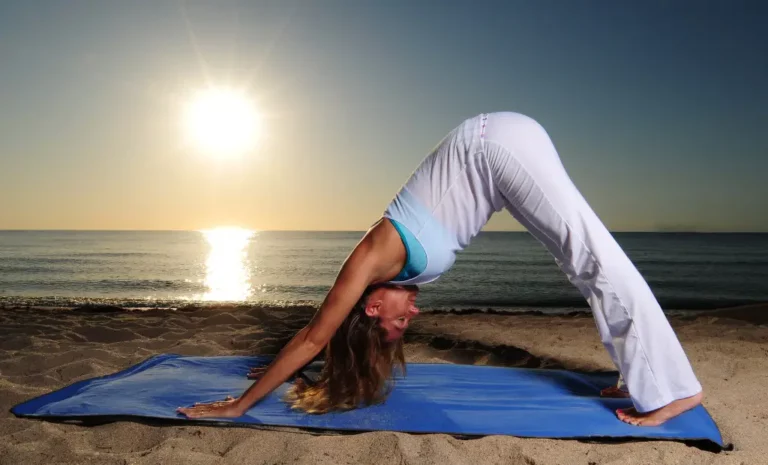Do Yogis Live Longer? The Science Explained

There are countless benefits to taking yoga up as a practice. You build strength, balance, posture, and flexibility while learning to quiet the mind and sit in stillness. It’s an activity that can promote health, mental wellness, and a longer life expectancy.
Yogis live longer due to meditation, conscious practice, and, most importantly, regularly engaging in a yogic lifestyle. These components work to lower specific physiological responses in the body over time, which in turn improve quality and length of life.
Yoga is a deeply personal, spiritual, and physical practice developed on the foundation of Patanjali’s Eightfold Path of Yoga that brings into alignment the mind, body, and spirit. The remainder of this article will explain in greater detail how these components extend life expectancy and what the scientific studies say about yoga and long-term health.
Yoga’s Connection to Living Longer
Most people hear the word ‘yoga’ and think of glorified stretching, and they may be right! As a yoga practitioner, my time on the mat has involved incredible stretching. Still, I’ve gained much more than flexibility– and there’s a reason for that.
The hour-long class you take at your nearest yoga studio or the virtual one you follow online is based on the traditional Buddhist Eightfold Path to Yoga, which dates back hundreds of thousands of years. The eightfold path in Buddhism is what leads to full enlightenment and liberation from the confines of an unhappy life.
The eightfold path in Buddhism was dedicated to helping people achieve happiness through the development of wisdom, mental discipline, and ethical conduct. The eightfold path to yoga is a physical practice that serves to follow these Buddhist teachings. Thus, one of yoga’s long-term benefits is reducing overall suffering, which is where the science comes in.
The Science of Meditation
While meditation and yoga are different practices, they almost always come hand-in-hand. Meditation is one of the key contributing factors to life expectancy. Multiple studies have shown that meditation reduces stress and blood pressure and alleviates symptoms of depression, anxiety, and post-traumatic stress disorder, among many other challenges. This alone creates a lesser likelihood of mental health-related fatalities and promotes a long-term ideology of healing.
Mastering the art of meditation involves simply calming the body through breathwork and turning your focus inward to learn about the vast spiritual universe within us. It’s not a process that can be achieved instantaneously but requires dedicated practice. Keep reading for some beginner breathwork techniques used in yoga and meditation, with the science that backs them up.
- Posture breathing: Posture breathing is exactly what it sounds like: intentional, deep, synchronized breathing that accompanies the postures you hold during yoga. Your body needs oxygen constantly– it helps to improve your body’s blood flow. When exercising or maintaining a pose, the oxygen reaching your muscles creates relaxation and flexibility in them.
- Diaphragmatic breathing: Diaphragmatic breathing is when you separate your inhales and exhales from your belly and diaphragm. With a straight spine, inhale slowly and as your stomach fills up, push it out and feel your chest expand. When you exhale, empty your belly first by pulling your navel in. Diaphragmatic breathing reduces blood pressure, stress, and heart rate while increasing the amount of oxygen in your blood.
- Breath of fire: The Breath of Fire is a Kundalini breathwork practice that involves a normally paced inhale with a quick, forceful exhale. The Breath of Fire boosts brain function and tightens the ab muscles simultaneously. It can be done actively or passively– either as a meditation technique or part of posture breathing.
These breathing techniques are just a few of many that exist to incorporate into your yoga and meditation routines. Consistent meditation decreases cellular aging, providing the most evidence of the longevity of one’s life.
The Science of Conscious Practice
When I roll my mat out for yoga every day, I’ve made a conscious deal to spend an allocated amount of time focusing on my physical body, breath, and inner, spiritual world. I start with an intention for the day’s practice and an acknowledgment of how my heart, mind, and body feel in that moment without judgment.
Conscious practice, whatever it looks like to the individual, is essential to reaping the benefits of yoga. It helps to keep practitioners consistent and present at the moment. Often, especially for those who struggle with anxiety, it’s easy to get lost in past behavior or the what-ifs of the future.
The conscious practice reminds us to focus on the current reality, which often grounds us simultaneously. Naturally, grounding lowers heart rate and creates consistency in your practice.
Yogis engage in conscious practice and general mindfulness, which improves concentration and reduces stress, leading to a healthier, longer life.
Yogic Lifestyle
Finally, yoga practitioners follow a yogic lifestyle– they engage in the eight limbs outlined on the Eightfold Path to Yoga, which I mentioned at the beginning of this article. These limbs The traditional eight limbs of yoga are:
- Yamas: The five Yamas of the eightfold path to yoga include truth, non-violence, non-indulgence, non-stealing, and non-possessiveness. These qualities of self-control are said to play a role in developing ethics, wisdom, and discipline, thus leading to a better quality of life.
- Niyamas: The Niyamas relate to the “hygiene” of our inner worlds. Practicing gratitude, cleanliness, self-reflection, and self-discipline are all aspects of the yogic lifestyle that many practitioners follow.
- Asanas: In a traditional context, the physical postures in yoga serve to prepare our bodies for practicing meditation.The asanas are the physical postures that connect our spirits (non-material) to our bodies (material). You can learn more about asanas by reading some of the books recommended in this article about the best yoga books for home practice.
- Pranayama: In Sanskrit, Pranayama refers to the vital life force we access through breathwork. Through breathing techniques, we strengthen our pranayama. Since breathwork decreases negative symptoms of various disorders, your body is left with more energy to conduct itself appropriately in other areas of life.
- Pratyahara: Pratyahara is another Sanksrit term that refers to pulling back from the overstimulation of our senses. Overloading the brain with sensory stimulation increases stress and overall distraction, so ensuring that you are not taking on too much is essential to the eight limbs of yoga.
- Dharana: When we can reduce overstimulation of the senses, we also learn how to concentrate our focus on one area. Concentration is a form of self-discipline and serves us in all areas of our life– at work, with friends and families, and in academics, to name a few.
- Dhyana: Dhyana is meditation, often included before, during, or after a typical yoga asana session.
- Samadhi: Finally, samadhi refers to the freedom from illusion that is often gained through deep states of self-reflection and meditation.
All in all, the eight limbs of yoga target one’s internal and external worlds to create harmony and a better quality of life.
Learn more!!! Read my article about Why Do You Laugh When Doing Yoga
Conclusion
Yogis live longer because they engage not only with the physical practice of yoga which keeps the body healthy and in shape, but the philosophy of it as well.
The philosophy of yoga serves to better the body, mind, and spirit, and its techniques extend life expectancy through altered physiological responses. So, whether you want to practice yoga to gain flexibility or to develop self-discipline, there are multiple benefits to becoming a yogi that can help you live a long, healthy life.







